Visiting the excellent National Emergency Services Museum
Posted by Chris Graham on 27th March 2024
Mike Neale visits the National Emergency Services Museum, in Sheffield, and comes away very impressed with the vehicles he saw.
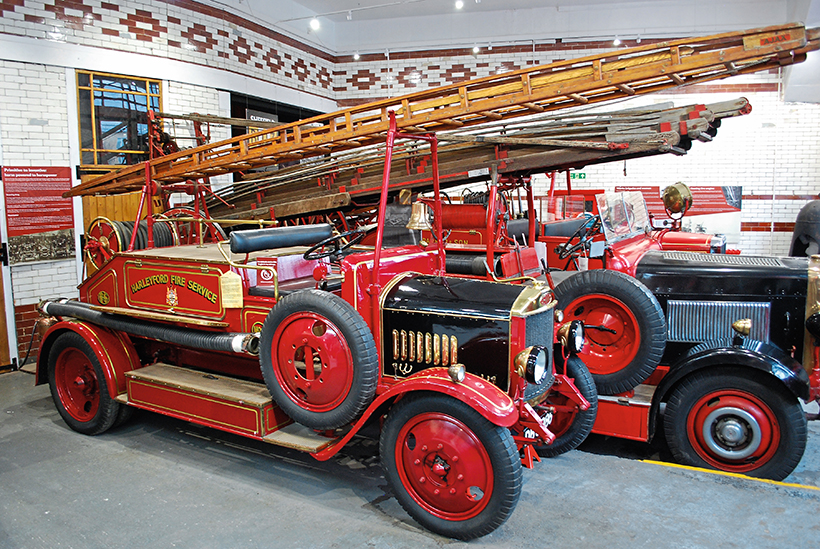
National Emergency Services Museum: This 1928 Dennis originally served with Stockport Fire Brigade.
Anyone with even only a passing interest in classic fire engines, ambulances or police cars would find a visit to the National Emergency Services Museum in central Sheffield a worthwhile trip.
Housed in what was the West Bar Police, Fire and Ambulance Station which opened in 1900, there are around 30 vehicles from all over the country on display, plus numerous other exhibits arranged over three floors of the building. The purpose-built combined services building is Grade II Listed and contains a number of original Victorian features, including prison cells and the engine house. It also has exhibits from other emergency organisations, such as HM Coastguard, including a 47ft lifeboat.
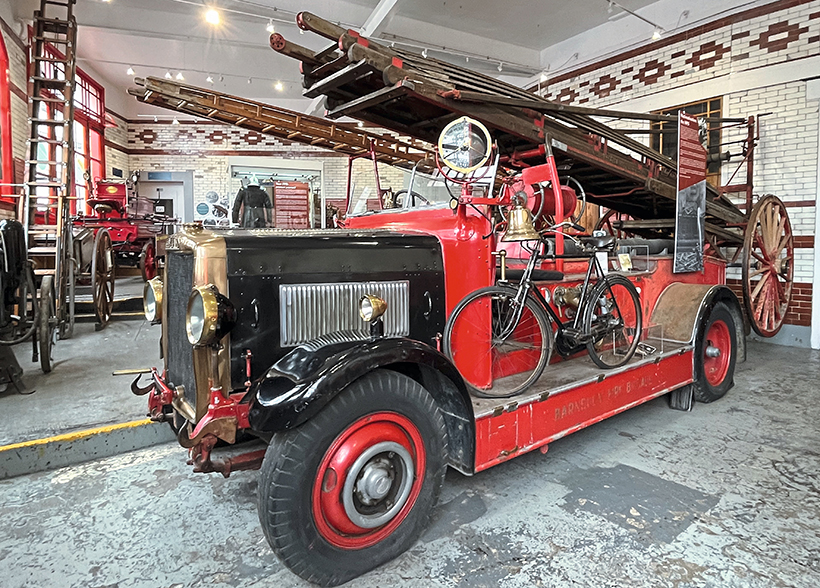
Barnsley Fire Brigade 1938 Leyland fire engine.
Early vehicles include horse-drawn steam fire engines. Motorised ones at the time of my visit included a 1928 Dennis supplied to Stockport Fire Brigade, one of the first motorised appliances fitted with pneumatic tyres. It has an AJAX ladder on the back and is fitted with a pump capable of supplying 250 gallons per minute. The vehicle was donated to the museum in 2011 by the Harleyford Estate, hence the Harleyford Fire Service livery it currently wears.
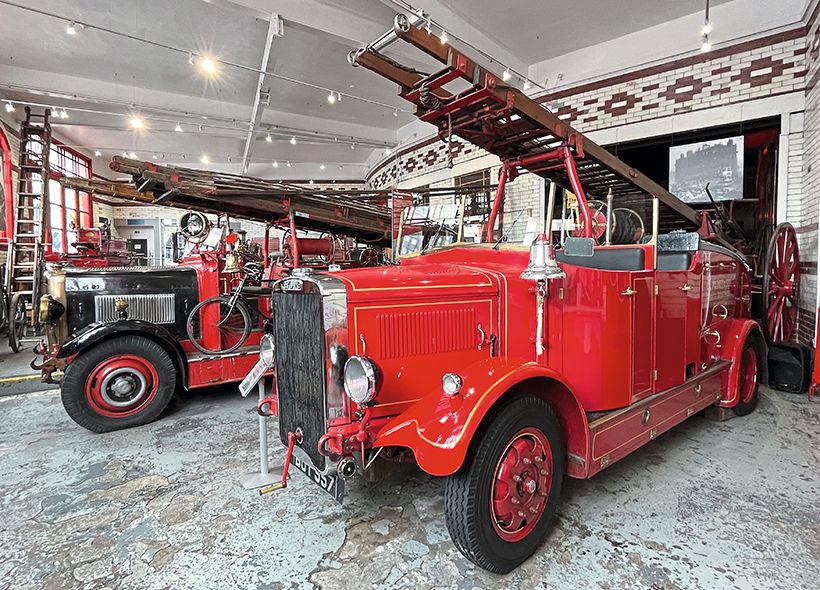
1940 Leyland Cub FK8 PE supplied to Market Harborough Urban District Council Fire Brigade.
A larger appliance, dating from 1938, is a Leyland fire engine weighing some six tonnes, with a pumping capacity of 700 gallons per minute. This was operated by Barnsley Fire Brigade. Again of an open design, it could carry eight firefighters, one of them ringing the hand-pulled bell. During the Blitz it was sent to Sheffield to help the overwhelmed local fire crews, and is now the last surviving fire engine that served in the Sheffield Blitz.
A 1940 Leyland Cub FK8 PE, with a six-cylinder ohv petrol engine, was supplied new to Market Harborough Urban District Council Fire Brigade, although it was soon transferred to the National Fire Service (NFS) when this was formed in 1941. After the war it went to Leicestershire & Rutland Fire Service in 1948 and was repainted in dark red and fitted with the wheeled escape ladder that it still has today. The restoration returned it to traditional fire engine red in the livery of A Parker & Son, Rootes Group dealer in Nuneaton.
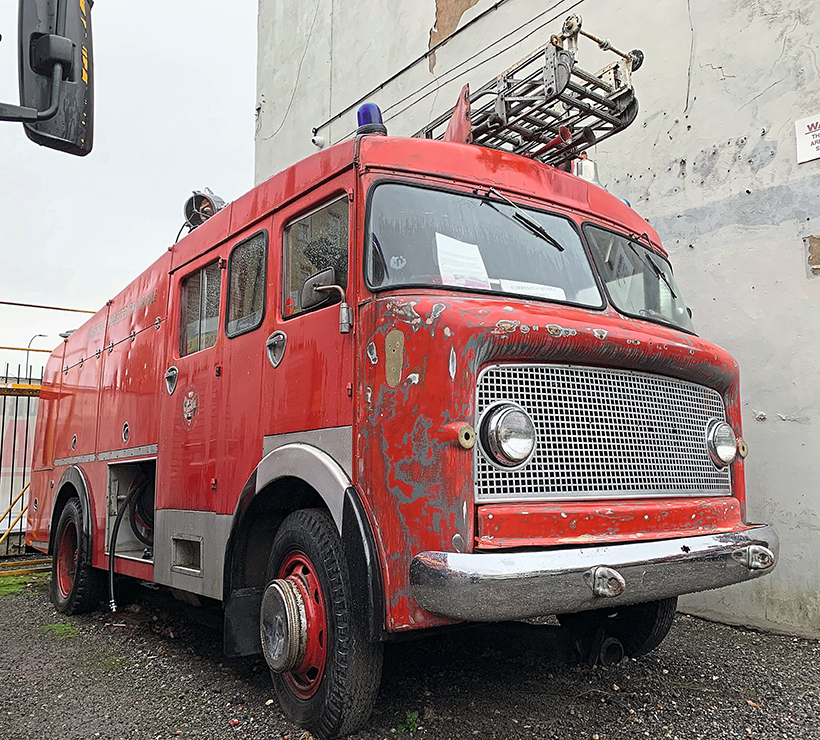
It’s hard to tell that this is a Bedford TJ, bodied by Hampshire Car Bodies.
An unusual appliance parked outside is a 1963 fully forward-control fire engine built on a Bedford TJ Chassis by Totton Fire Appliance builders, Hampshire Car Bodies. This has a fibreglass scuttle with a full-width mesh grille, which give few clues to its Bedford underpinnings, and a large chrome front bumper. The rear body is traditional timber and metal construction. It is fitted with a 400-gallon tank and Gwynne main pump. It was built for Hereford and Worcester Fire Brigade, serving at Tenbury Wells until decommissioned in 1980.
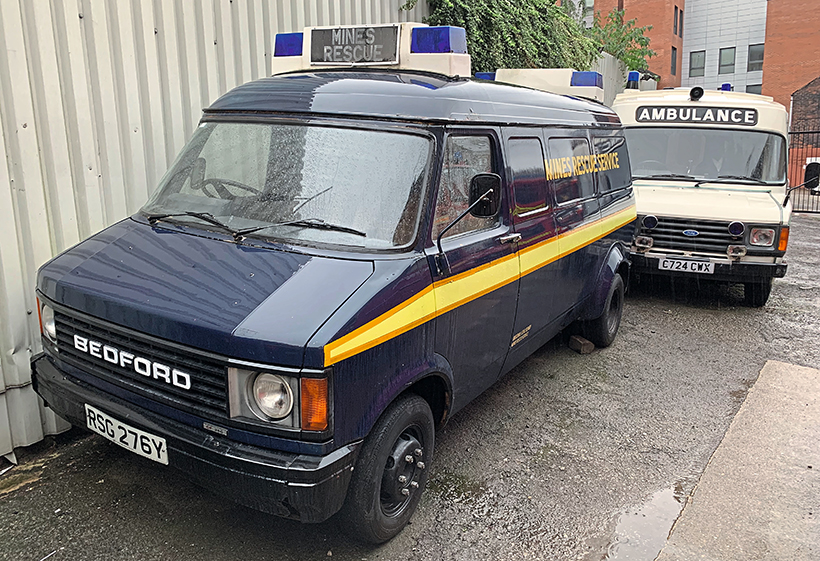
1982 Mines Rescue Service Bedford CF350.
Also seen outside was a dark blue National Coal Board Mines Rescue Service Bedford CF350, dating from 1982, with a 2,279cc petrol engine, in use until it suffered engine failure and was retired from operational duties at the Ashby-de-la-Zouch station.
There are two 1940s Austin K2s in the museum, one a grey NFS fire engine and the other a 1941 Austin K2Y Ambulance, possibly the best-known wartime ambulance, one being driven by the late Queen, then HRH Princess Elizabeth, when serving with the Auxiliary Territorial Service during World War Two. This particular ‘Katy,’ as they were known, was restored by the Ambulance Heritage Society which has loaned it to the museum. Over 13,000 were built, but many were lost at Dunkirk.
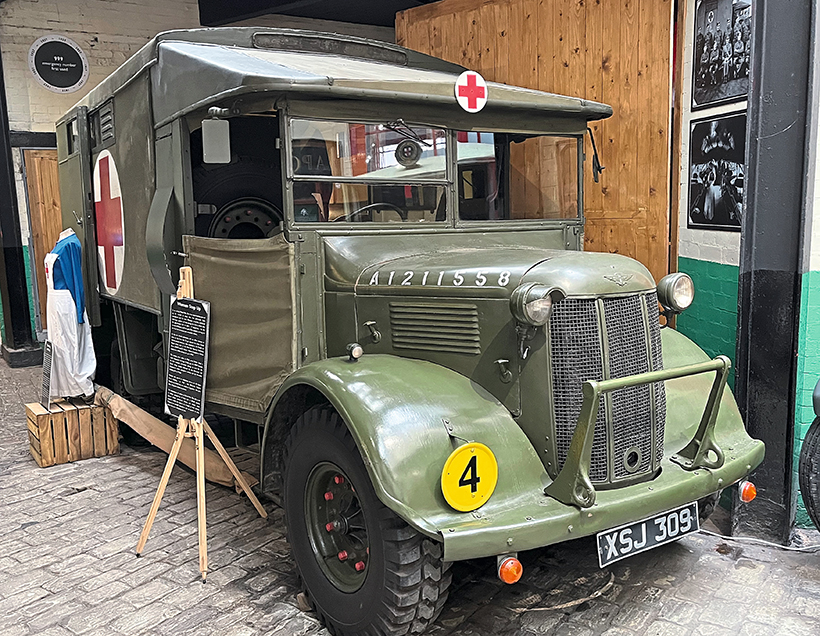
Austin ‘Katy’ Ambulance built in 1941.
Another, rather majestic looking, Austin ambulance is the 1950 Sheerline bodied by Herbert Lomas Ltd in Wilmslow, Cheshire, on an extended chassis, resplendent in dark blue City of Sheffield Ambulance Service livery. Weighing over two tonnes, plus the crew and equipment, it was quite an effort to steer the Austin. The vehicle is on loan from Yorkshire Ambulance Service.
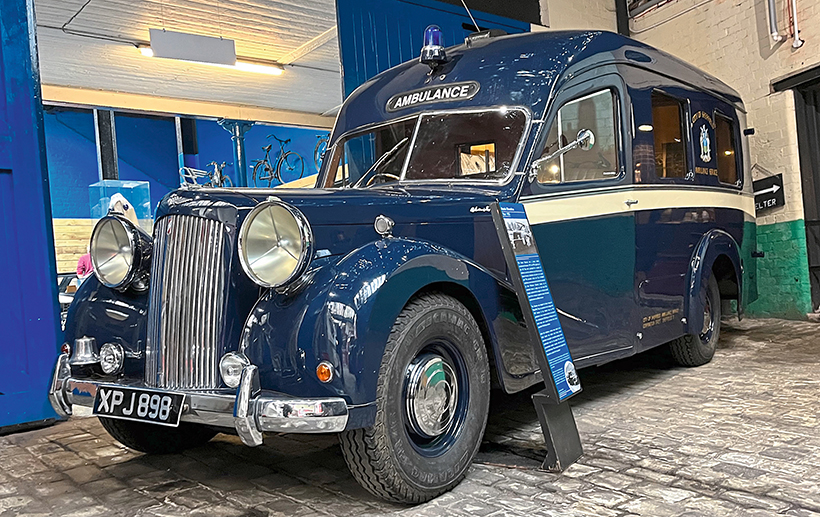
Herbert Lomas-bodied 1950 Austin Sheerline Ambulance.
Dating from 1956, during the Cold War, is a Ford Thames ET6 Civil Defence Corps Control Unit, equipped for a quick response to a nuclear attack alongside other emergency vehicles such as the Green Goddess fire tenders. When it was stood down in 1966 it went to Coventry Ambulance Service, continuing with West Midlands Ambulance Service in 1974, serving as a mobile control room. It has been restored back to its original CDC livery.
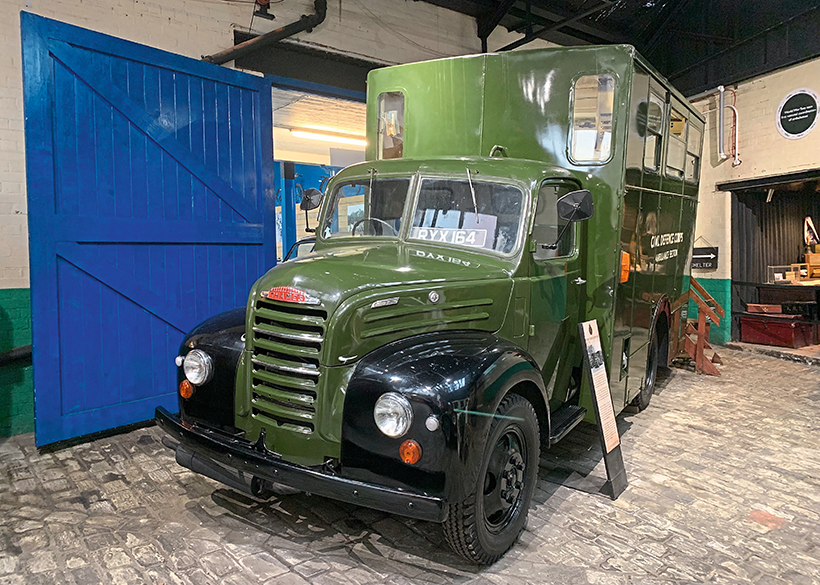
Civil Defence Corps Ford Thames ET6.
What at first looks like a fairly innocuous dark blue 1979 Land Rover Series III is in fact an armoured vehicle which originally served at Heathrow Airport before passing to South Yorkshire Police for ‘special operations’ with the armed response team. The windows are apparently 1in thick ballistic glass. It has a 2.5-litre petrol engine.
Police cars on display include a Wolseley 6/80, Rover P6 3500 and a Morris Minor Panda Car, among others.
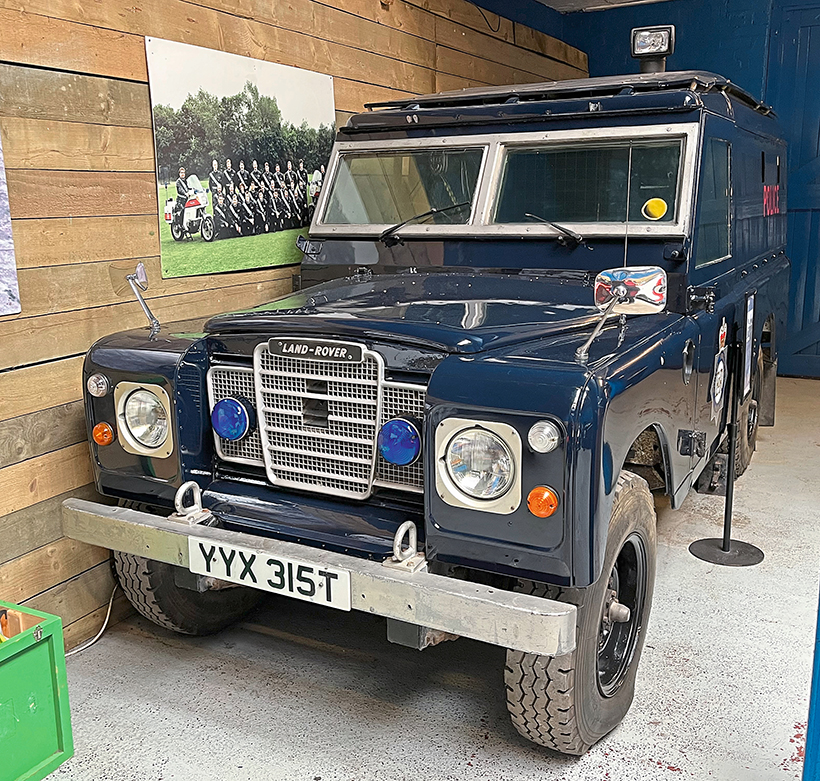
Armoured Police Land Rover Series III.
The museum also has several other vehicles in storage, not usually on display to the public, including some needing or in the process of restoration. One of these is a 1940 Bedford ML fire engine with bodywork by Baico Patents of Chiswick, London, built for the Rover car factory in Solihull, where it was in service until 1974. During World War II it went to Coventry to fight the fires caused by the huge number of bombing raids on the city. It is one of the first fire engines to have an enclosed cab. Some work was previously done to get the vehicle running by TV’s Salvage Squad, and the museum has worked on wiring, lighting and ignition issues as well as woodwork and steering.
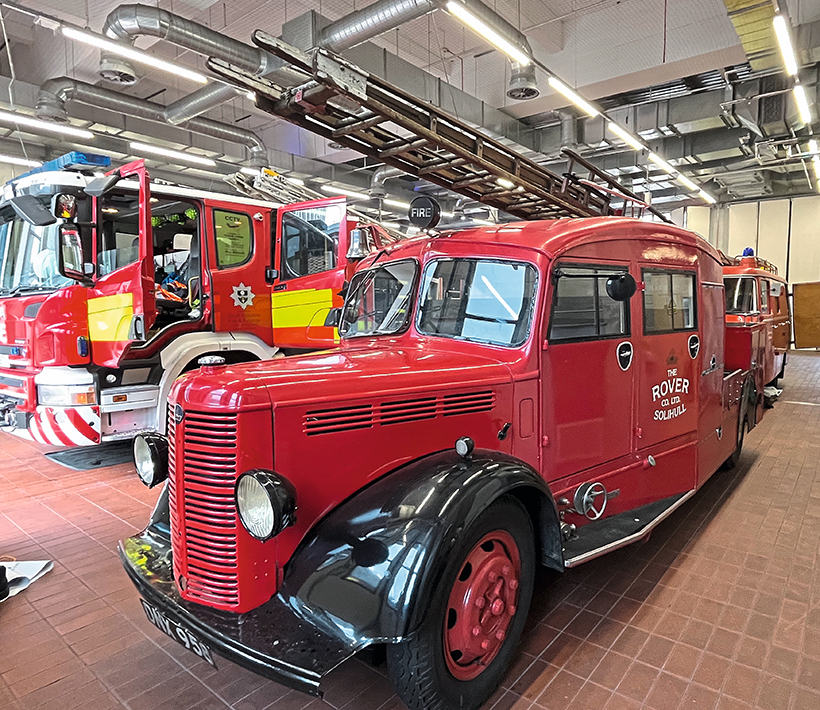
1940 Bedford ML Rover works fire engine
The museum is usually open Wednesday to Sunday, from 10am to 4pm, plus on Bank Holiday Mondays. Admission is £9.50 (Children 3-15 £7.50, under 3s free; family, OAP, Wheelchair user, Student and 999 Staff tickets also available).
See www.visitnesm.org.uk or tel. 0114 2491 999 for up-to-date opening times and events. The tickets are valid for free return visits for one year. There is a coffee shop serving food and refreshments, as well as a gift shop.
This feature comes from the latest issue of Classic & Vintage Commercials, and you can get a money-saving subscription to this magazine simply by clicking HERE
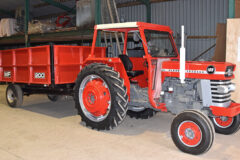
Previous Post
Massey Ferguson Red Giant tractor and implement collection
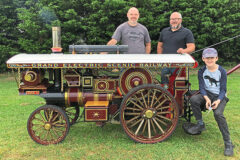
Next Post
A superb Burrell showman’s engine project



